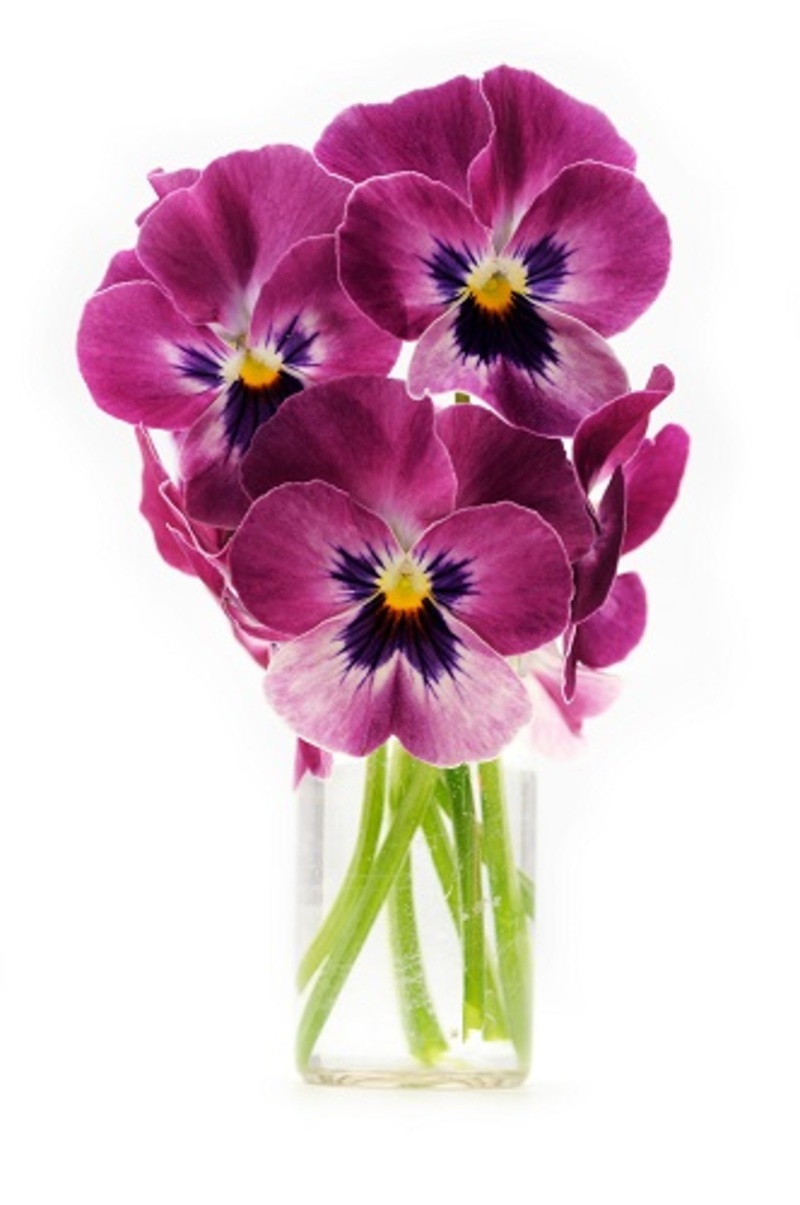Unveiling 8 Fascinating Facts About Sunflowers
Posted on 27/08/2025
Unveiling 8 Fascinating Facts About Sunflowers
Sunflowers, scientifically known as Helianthus annuus, are captivating blooms that have mesmerized humanity with their radiant appearance and symbolic meaning. Yet, there is much more to sunflowers than what meets the eye. In this comprehensive article, we'll embark on a journey to discover eight intriguing facts about sunflowers, including their scientific uniqueness, cultural impact, and surprising benefits. Whether you're a gardening enthusiast or simply curious, these sunflower insights will brighten your knowledge and deepen your appreciation for one of nature's most remarkable flowers.

1. Sunflowers Originate from the Americas
While many associate the vibrant sunflower with fields in Europe or Asia, the sunflower's true origins lie in the Americas. Evidence suggests that Native American communities began domesticating sunflowers over 4,500 years ago. These indigenous tribes not only cultivated sunflowers for their beauty, but also for their immense value as a food source and raw material.
- Native Americans used sunflowers for culinary purposes by ground the seeds into flour for bread and cakes.
- The oil extracted from sunflower seeds was used for cooking and as a base for body paints and salves.
- Sunflower stalks found utility as building materials and weaving fibers.
By the 16th century, Spanish explorers brought sunflower seeds to Europe, where the plant's popularity rapidly blossomed. Today, this iconic flower is globally recognized and cultivated in diverse climates, particularly for sunflower oil and decorative gardening.
2. Sunflowers Follow the Sun: The Phenomenon of Heliotropism
Perhaps the most universally known fact about sunflowers is their apparent ability to follow the sun. This unique movement is known as heliotropism, and it occurs primarily during the plant's budding and early growth stages.
- Young sunflower heads face east at dawn and slowly track the sun across the sky, turning west by evening.
- At night, the flower head reorients to the east, ready for the next sunrise.
- This rhythmic motion increases photosynthesis, leading to more robust plant growth.
As the sunflower matures and the bloom gets heavier, this movement ceases, with the flower settling to face east permanently. Recent studies suggest that east-facing flowers not only receive more sunlight but are also more attractive to pollinators like bees. This remarkable adaptation makes the sunflower a true sun worshiper in the floral kingdom.
3. Sunflowers Are Not a Single Flower, But a Flower Head
One of the most fascinating facts about sunflowers is the realization that what we perceive as a singular, dazzling flower is actually a composite of hundreds, sometimes thousands, of tiny blooms known as florets.
- The outer "petals"--called ray florets--are sterile and serve to attract pollinators with their bright color.
- The center of the head is densely packed with disk florets--each capable of maturing into a seed.
This composite structure is a characteristic feature of the Asteraceae family (also known as the daisy family), making sunflowers closely related to daisies, asters, and chrysanthemums. Next time you admire a sunflower, remember you're actually gazing at a vibrant community of flowers, not just a single bloom!
4. The Mathematics of Sunflowers: Fibonacci Sequence and Golden Ratio
Among the most extraordinary sunflower facts is the presence of complex mathematical patterns within their flower heads. The seeds are arranged in stunning spirals, and this arrangement follows the Fibonacci sequence--a famous mathematical sequence in which each number is the sum of the two preceding ones (1, 1, 2, 3, 5, 8, etc.).
- Look closely, and you'll notice two sets of spirals swirling in opposite directions.
- The number of these spirals generally corresponds to consecutive Fibonacci numbers.
- This pattern optimizes the packing of seeds, maximizing the number that can fit within the head.
Mathematicians and naturalists alike marvel at this natural efficiency, as the Fibonacci spiral is also related to the Golden Ratio--a proportion often associated with aesthetic beauty. Sunflowers thus unite science and art in a remarkable way.
5. Sunflowers Serve Numerous Ecological and Practical Purposes
The uses of sunflowers extend far beyond their visual charm. They yield a host of environmental and economic benefits, making them one of the most versatile flowering plants in cultivation today.
- Sunflower seeds are consumed worldwide as a nutritious snack, rich in healthy fats and protein.
- Sunflower oil is a staple in kitchens, prized for its light flavor and high vitamin E content.
- Animal feed: Sunflower seed meal, a byproduct of oil extraction, is used as livestock feed.
- Phytoremediation: Sunflowers are adept at absorbing toxins, making them useful in soil cleanup efforts after events like nuclear accidents.
For example, sunflowers were planted extensively around the Chernobyl and Fukushima disaster sites to help extract radioactive contaminants from the soil. Their ecological adaptability and utility in agriculture explain why sunflowers remain such an important global crop.
6. Sunflower Varieties: More Than Just Yellow Blooms
When people picture sunflowers, they often imagine gigantic plants with bright yellow petals. However, there are more than 70 species of sunflowers, featuring a dazzling array of sizes, shapes, and colors.
- Classic yellow sunflowers (such as 'Russian Giant') can grow up to 12 feet tall and have massive heads.
- Compact varieties like 'Teddy Bear' sunflowers boast double-petaled, fluffy faces, ideal for containers or smaller gardens.
- Ornamental sunflowers come in hues of red, orange, burgundy, and even bi-colored patterns, like 'Autumn Beauty' or 'Moulin Rouge'.
- Some sunflowers are cultivated solely for seeds, while others are prized for their oil or ornamental value.
Nowadays, creative horticulturists have developed sunflowers tailored for every need--whether it's for productive farming, pollinator gardens, or striking floral arrangements. This diversity showcases the adaptability and beauty of the humble sunflower.
7. Sunflowers in Culture: Symbolism and Artistic Inspiration
No exploration of sunflower trivia would be complete without acknowledging their immense impact on human culture and creativity. The sunflower's bright visage has inspired artists, writers, and philosophers throughout history.
- Sunflowers symbolize positivity, loyalty, and longevity in many cultures.
- They are considered emblems of adoration and happiness--owing to their resemblance to the sun and their sunny hue.
- Vincent van Gogh's sunflower paintings remain some of the most famous works of art, symbolizing hope and emotional warmth.
- In Greek mythology, the myth of Clytie and Apollo narrates the sunflower's devotion to the sun god, underlining its role as a symbol of adoration.
- Sunflowers in festivals: In many countries, sunflowers are central to harvest festivals and Thanksgiving celebrations as symbols of abundance.
The sunflower's cultural footprint stretches across time and geography, embodying the universal desire for light, growth, and happiness. From poetry to paintings, these radiant blooms continue to inspire and uplift.
8. Sunflowers Can Be Giants: Record-Breaking Heights and Sizes
One of the most astonishing facts about sunflowers is their sheer potential for size. Under optimal conditions, these plants can soar to breathtaking heights, earning them a place in the record books.
- The world's tallest sunflower on record, as confirmed by Guinness World Records, reached a staggering 30 feet, 1 inch (9.17 meters) in Germany, 2014.
- The largest sunflower head ever measured had a diameter of close to 32 inches (82 cm).
- Sunflowers can produce thousands of seeds in a single bloom--an evolutionary marvel for plant reproduction and food source abundance.
If you have the space and sunlight, giant sunflower varieties can make a bold and memorable statement in your garden or community. Their towering form captures the awe and imagination of observers young and old.

Cultivating Sunflowers: Tips for Your Own Golden Garden
Now that you've discovered these eight amazing facts about sunflowers, why not try growing them yourself? Here are a few essential tips for cultivating healthy, vibrant sunflowers in your home or garden:
- Choose the right variety: Select a variety best suited for your local climate and the space you have available, whether it's a giant or a compact species.
- Sunshine is key: Sunflowers thrive in full sun, requiring at least 6-8 hours of direct sunlight per day.
- Soil quality: Loose, well-drained soil enriched with compost promotes strong growth. Sunflowers are relatively drought-resistant but benefit from regular watering during dry spells.
- Support tall plants: Some varieties grow very tall and may require staking or support in windy areas.
- Spacing: Plant seeds 6-12 inches apart, depending on the sunflower type.
With the right care, even novice gardeners can enjoy these sunny, nectar-rich flowers and observe firsthand their fascinating traits--from sun-following movements to abundant seed production.
Conclusion: The Enduring Magic of Sunflowers
From their ancient origins and unique biological features to their incredible utility and inspiring symbolism, sunflowers are truly a marvel of nature. Each golden bloom tells a story of adaptation, resilience, and beauty. Whether you plant them for food, oil, shade, or sheer delight, sunflowers will continue to brighten fields and hearts around the world.
By unveiling these eight captivating facts about sunflowers, we hope you've gained a deeper appreciation for this extraordinary plant. Next time you see a sunflower, take a moment to marvel--not just at its sunny face, but at the incredible science, history, and culture it represents. If you're considering adding a splash of gold to your garden, remember: the sunflower's story is still in full bloom!
Latest Posts
Unveiling 8 Fascinating Facts About Sunflowers
Exploring the Significance of Red Roses on Valentine's Day
12 Flowers That Stand the Test of Time





